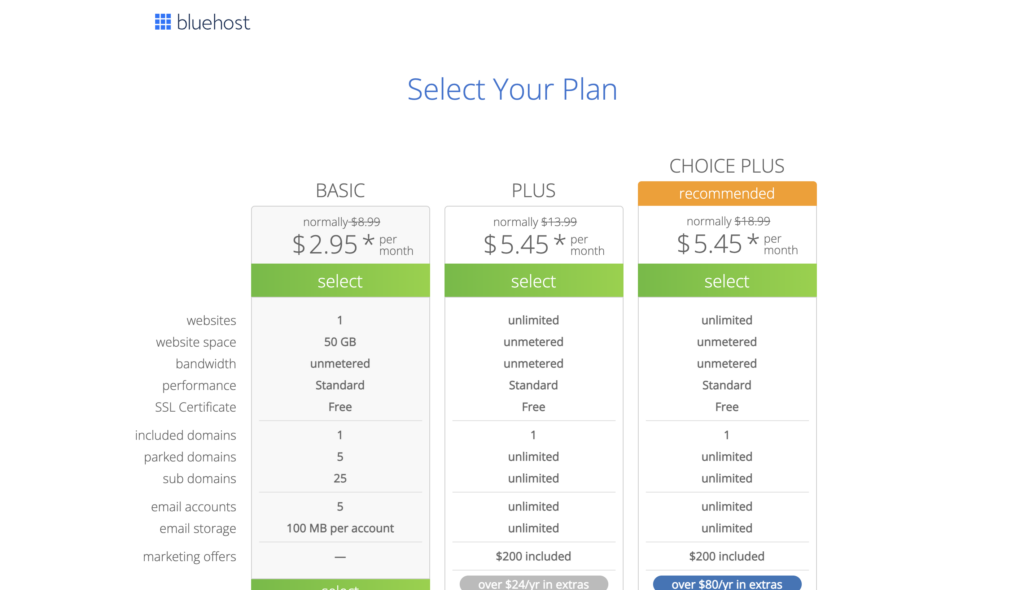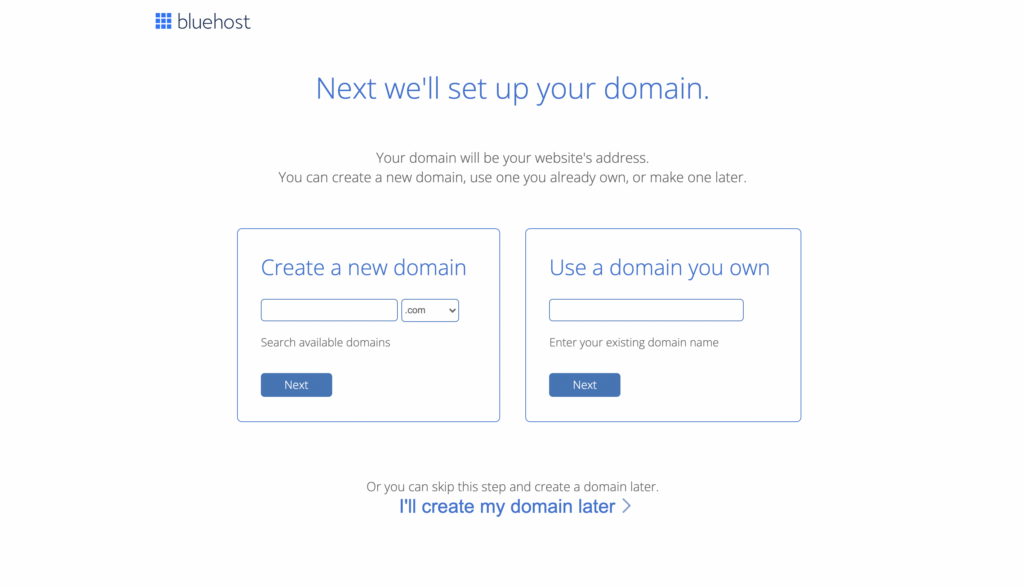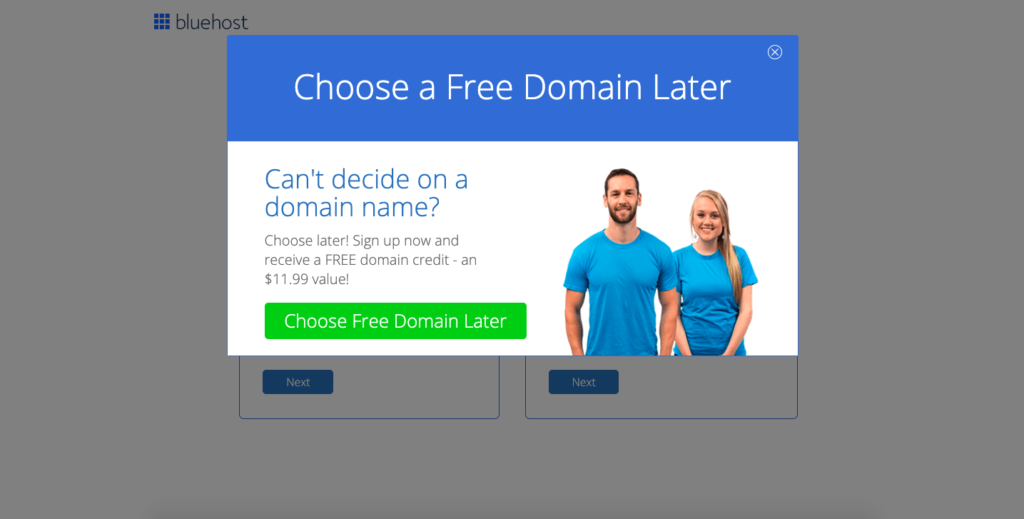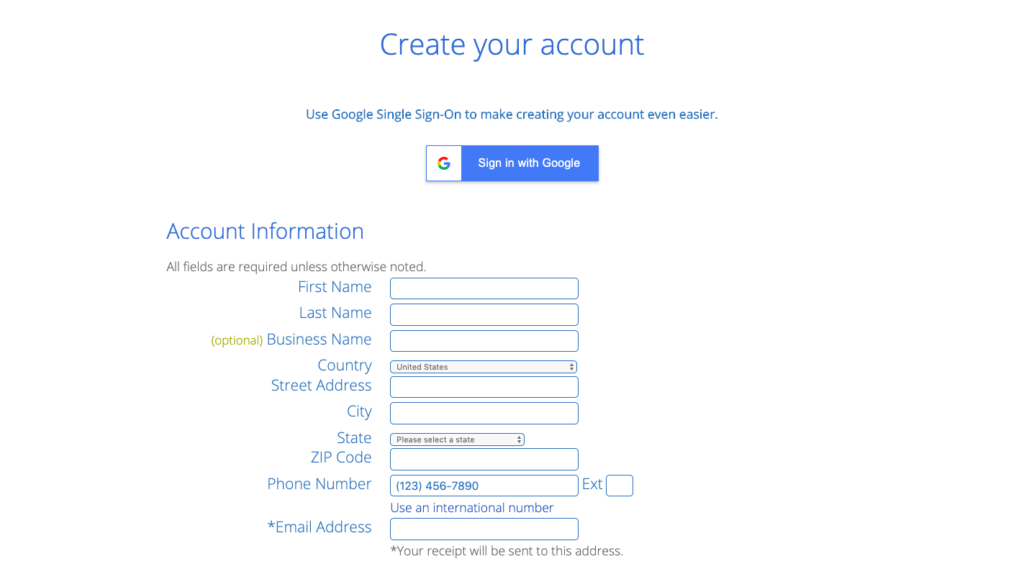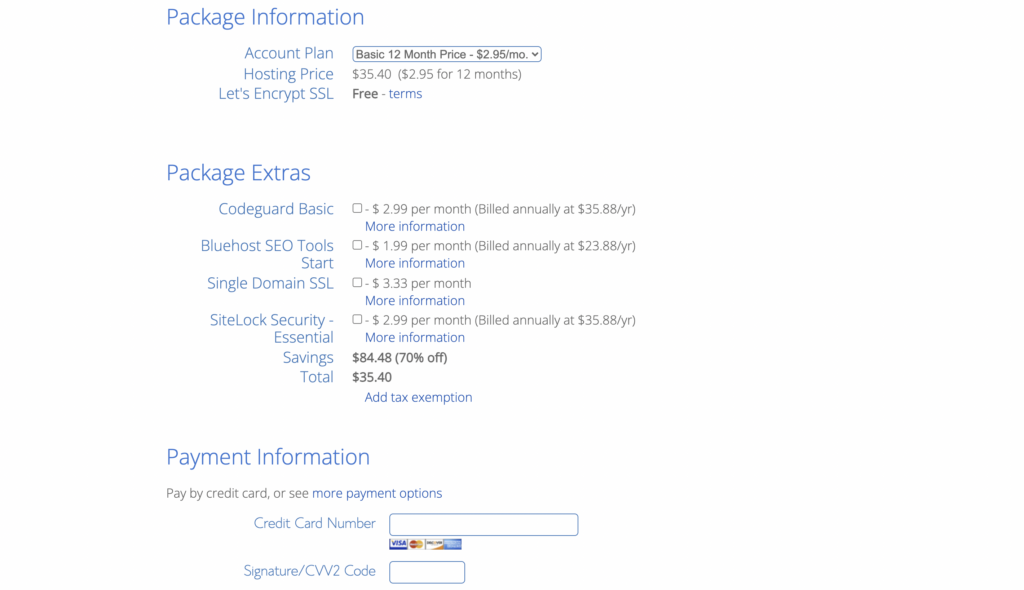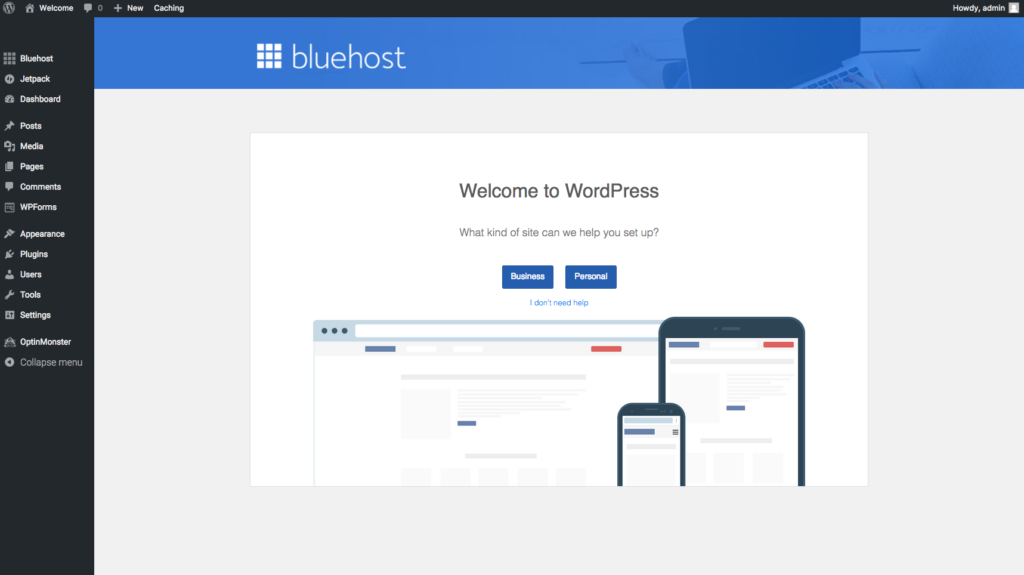Note: Affiliate links may be used in this post. When you buy through my affiliate links I may earn a commission at no extra cost to you. Full disclosure here.
The Ultimate List of Blog Income Reports
Reading blog income reports is what inspired me to start my own blog. It’s always enlightening to see how other bloggers make money and what strategies they’re using. Income reports can be a great learning tool for new bloggers.
I put together this list of 250+ blog income reports to show you bloggers in every niche earning money from their blogs, from $10 a month to $100,000+ a month.
Want to start your own blog? Check out my step-by-step how to start a blog guide or enroll in my free Blogging Bootcamp email course:
First things first, CLICK HERE to learn the cheapest way to start your blog!
Then read this guide for the next steps of starting your blog today.
Blogging has an extremely low start-up cost: You really only need to pay for web hosting (I recommend getting it through Bluehost because it’s only $2.95 a month) and a domain name for your blog. And you will get your domain name FREE with Bluehost, which saves you about $15-20.
For the complete guide on how to start your blog at a low cost, sign up for my free email course or check out my guide on how to start a blog here.
How Do Bloggers Make Money?
Before I get into the list of blog income reports, let’s talk about how bloggers actually make money. There are quite a few different ways!
The bloggers from these income reports make money through several methods.
Some of the most popular ways to make money blogging are:
- Affiliate marketing: Promoting products and earning a commission when someones makes a purchase through your unique affiliate link. Affiliate marketing is my favorite way to make money from blogging.
- Advertising: Displaying ads on your blog through an ad network such as Google AdSense, Monumetric, AdThrive, or Mediavine.
- Digital products: Many bloggers create digital products such as ebooks, online courses, templates, printables, etc. and sell them on their blog.
- Sponsored posts: Collaborating with brands to write sponsored blog content or create sponsored social media content.
- Services: Offering services such as coaching, freelance writing, social media management, virtual assistant services, etc. through your blog.
Related: How Do Bloggers Make Money? Top 5 Ways Explained
If you want to start your own money-making blog, be sure to read this step-by-step guide to learn how to start your blog in under an hour!
Blog Income Reports as a Marketing Tool
Before I get into the list, I do want to note a few things about income reports.
First of all, the main reasons that bloggers write income reports is to make money. Blog income reports are primarily a marketing tool used by bloggers, and it’s important to remember that as you read them.
Bloggers make money from income reports by:
- Sharing their affiliate link for web hosting by encouraging you to sign up and start your own blog (web hosting commissions are very lucrative)
- Sharing their affiliate links for blogging courses and ebooks (again, digital products like these tend to have pretty high commissions)
- Promoting their own blogging courses and ebooks, blog coaching services, etc.
I don’t think there is anything wrong with this (I have written income reports myself!) but it’s definitely something to keep in mind as you read them.
Who’s Writing Income Reports?
This is also the reason income reports skew disproportionately to certain niches. Blogs about making money, online business, personal finance, marketing, etc. are more likely to share income reports than, say, a fashion blogger.
But keep in mind that there are bloggers in EVERY niche who are blogging full-time and making six figures from their blogs. They just aren’t writing about it publicly on the Internet because it wouldn’t make sense for their business.
Finally, remember that blog income reports don’t always tell the whole story.
Considering the Big Picture
Many bloggers use creative accounting when sharing their income, or leave important things out. It’s easy to read an income report from a blogger making $10,000 a month, but keep in mind that could easily only be $5,000 a month after the blogger accounts for business expenses, taxes, and insurance.
That being said, I still think blog income reports are a great learning tool and provide a lot of value, which is why I put this list together in the first place.
They can definitely give you a good idea of how to make money blogging and you can see what’s working for other bloggers. I found reading income reports very motivating too when I was a new blogger!
The Blog Income Reports List
So let’s get into it! Here are 250+ blog income reports broken down by niche.
Note: Most of these are monthly income reports. However, in instances where a blogger has shared a quarterly or annual income report instead, I have represented it as an average monthly figure here for consistency.
Travel Blog Income Reports
- The Atlas Edit: $10
- Nomad Numbers: ~$212
- Journey with Jess: $241
- Mathers on the Map: $314
- Top Travel Sights: $539
- Part Time Tourists: $580
- Happily Ever Travels: $591
- She Dreams of Alpine: $700
- Once in a Lifetime Journey: $1,048
- Sunshine Seeker: $1,123
- World Travel Family: ~$1,533
- Desk to Dirtbag: $1,724
- The Sweetest Way: $1,933
- The Wandering Gourmand: $2,019
- Ashley Abroad: $2,122
- Travel Blog Breakthrough: $2,271
- Eternal Expat: $2,501
- Johnny Africa: ~$2,861
- Ali’s Adventures: $2,869
- Wherever Writer: $3,575
- Amy Fillinger: $4,223
- The Professional Hobo: ~$4,243
- Trekkn: $5,000
- Practical Wanderlust: $5,421
- Globetrotter GP: $5,733
- A Passion and a Passport: ~$6,166
- Where’s Sharon: $6,558
- The Atlas Heart: $6,598
- Valerie & Valise: $7,839
- Nomad Life 101: $8,650
- Living the Dream RTW: $9,129
- A Dangerous Business: $9,229
- Fun Life Crisis: $10,455
- Helene in Between: $15,755
- Two Wandering Soles: $16,389
- Adventure in You: $19,233
- Local Adventurer: $23,001
- Travel Mexico Solo: $23,786
- Kara and Nate: ~$41,176
- It’s a Lovely Life: $147,833
Personal Finance Blog Income Reports
- Becoming Life Smart: $60
- Reverse the Crush: $109
- The Extra Income Project: $179
- Frugal Mom Guide: $200
- Wallet Squirrel: $441
- The Millennial Bull: $599
- Bee Money Savvy: $825
- Financial Flamingo: $1,043
- My Money Yard: ~$1,333
- Moms Make Cents: $2,126
- The Frugal Millionaire: $2,170
- The Budget Mom: $2,660
- Wealthy Nickel: ~$3,049
- I Like to Dabble: $3,070
- Retired by 40: $3,328
- The Frugal South: $3,433
- Money from Side Hustle: ~$3,626
- Lylia Rose: $3,735
- Project Financially Free: $3,786
- Perfection Hangover: ~$3,879
- Money Q and A: $3,923
- Swift Salary: ~$4,414
- Crowd Work News: $4,628
- Freedom in a Budget: $5,253
- Millennial Boss: $6,658
- The Financial Cookbook: $6,836
- Fin Savvy Panda: $6,840
- This Online World: ~$7,666
- Unconventional Prosperity: $8,255
- Make Money Your Way: $8,760
- Single Moms Income: $8,768
- Caroline Vencil: $12,007
- The Money Ninja: $12,516
- Believe in a Budget: $18,128
- Club Thrifty: $23,620
- The Savvy Couple: $43,547
- Dollar Sprout: $61,915
- Busy Budgeter: $86,438
- Millennial Money Man: $127,213
- Making Sense of Cents: $145,319
Lifestyle Blog Income Reports:
- Tickled Think: $111
- Life Fully Caffeinated: $177
- Mind Her Way: $202
- Hustle and Hearts: $290
- Embracing Simple: $293
- Blast Aloud: $442
- Budget and Mom Jeans: $507
- Lifestyle with Leah: $587
- Squirrels of a Feather: $667
- Boss Babe Chronicles: $821
- The Mostly Simple Life: $970
- Shannon Torrens: $1,049
- Lucky Mojito: $1,127
- Tory Stender: $1,166
- The Thought Journal: $1,257
- A Love 4 Me: $1,790
- Oh Clary: $1,910
- Mostly Morgan: $1,998
- Nikki’s Plate: $2,332
- We’re Adulting: $3,016
- Kay Buell: $3,039
- Imperfect Idealist: ~$3,238
- Joanna Rahier: $3,278
- The Huntswoman: $3,541
- Chasing a Better Life: $4,273
- Let’s Reach Success: $4,305
- Heart’s Content Farmhouse: $4,310
- Making Midlife Matter: $4,549
- The Fab 20s: $5,187
- Hairs Out of Place: $5,220
- Hooked to Books: $5,440
- By Leah Claire: $6,119
- Thrifts and Tangles: $6,796
- Guitar and Lace: ~$7,233
- A Modern Homestead: ~$8,468
- By Sophia Lee: $9,439
- Hot Beauty Health: $9,655
- Fantabulosity: $10,643
- One Big Happy Life: $10,900
- Anna in the House: $13,813
- Chasing Foxes: $19,889
- Just a Girl and Her Blog: $41,700
Food Blog Income Reports
- Salted Mint: $403
- Bon Aippetit: $787
- Chelsea Joy Eats: $789
- The Fiery Vegetarian: $888
- The Twin Cooking Project: $997
- In the Kitchen with Matt: ~$1,015
- Jar of Lemons: $1,121
- Thyme and Joy: $1,334
- Bowl of Delicious: ~$1,419
- Yup It’s Vegan: $1,478
- Fork in the Road: $2,078
- Get on My Plate: $2,106
- Hangry Woman: $2,605
- Always Use Butter: $3,183
- Midwest Foodie: $3,284
- Broken Oven Baking: ~$3,800
- Oh So Foodie: $4,506.30
- Butternut Bakery: $5,041
- Piping Pot Curry: $5,110
- The Bewitchin’ Kitchen: $6,312
- Bites by Bianca: ~$6,433
- Stephanie’s Sweets: ~$6,791
- The Bettered Blondie: $7,115
- Whole Kitchen Sink: $10,631
- 40 Aprons: $12,371
- The Clean Eating Couple: ~$12,500
- A Sassy Spoon: $15,843
- Kitchen Sanctuary: $18,341
- Show Me the Yummy: $46,367
- Pinch of Yum: ~$100,000
DIY/Craft and Home Blog Income Reports
- Keep It Simple DIY: $74
- Crazy Cool Crochet: $263
- Neat House Sweet Home: $653
- Desert Blossom Crafts: $1,941
- Sew Some Stuff: $2,802
- Fiddle Leaf Interiors: $2,911
- Cut n Make Crafts: $3,154
- Honeybear Lane: $3,505
- I Heart Arts n Crafts: $4,045
- Swoodson Says: ~$4,374
- Arts and Classy: $4,509
- Crochet 365 Knit Too: $5,142
- One Little Project: $7,315
- Sewrella: $9,755
- Crochetpreneur: $17,295
- The Shabby Creek Cottage: $25,319
Mom Blog Income Reports
- The Keele Deal: $345
- House of Sonshine: $487
- Seaside Sundays: $525
- Autistic Mama: $596
- Journey to SAHM: $630
- No Guilt Mom: $667
- Italian Polish Mama: $1,019
- Midwife and Life: ~$1,035
- Kori at Home: $1,356
- Mom Beach: $1,410
- The Mummy Front: $1,555
- This Mama Blogs: $1,937
- Another Mommy Blogger: $2,546
- Easy Baby Life: $4,310
- Mommy on Purpose: $5,157
- Mommy to Max: $5,251
- The Intentional Mom: $5,481
- Pulling Curls: $6,631
- What Mommy Does: $7,464
- Cassie Scroggins: $7,914
- Swaddles ‘n’ Bottles: $11,180
- The Soccer Mom Blog: $11,288
- The Realistic Mama: $12,366
Health and Fitness Blog Income Reports
- Ironwild Fitness: $135
- A Natural Endeavor: ~$333
- About Social Anxiety: $954
- Xukkhini: $1,732
- Vigor It Out: $1,906
- Fit Mom Journey: $10,124
- Organize Yourself Skinny: $13,018
- Kath Kyle: $15,534
- Avocadu: ~$30,000
Business Blog Income Reports
- Easy Blog Emily: $1,125
- Redefining Mom: $1,135
- Out of the 925: $1,182
- Ladies Make Money: $1,306
- Passive Income Wise: $1,693
- Anastasia Blogger: $2,085
- House of Brazen: $5,221
- Inspired Bloggers University: $6,845
- She Dreams All Day: $7,704
- Prosmartrepreneur: $8,657
- Do You Even Blog: $9,663
- Love Family Health: $11,974
- Sadie Smiley: $17,521
- Horkey Handbook: $20,492
- Start a Mom Blog: $24,170
- Matthew Woodward: $28,429
- Ryan Robinson: $40,441
- A Self Guru: $60,959
- Adam Enfroy: $61,572
- Smart Passive Income: $127,787
- Melyssa Griffin: $140,779
Fashion and Beauty Blog Income Reports
- Beauty Brains Blush: $413
- The Baller on a Budget: $1,569
- Sandy a la Mode: $3,650
- Affordable by Amanda: $4,425
- Fit Mommy in Heels: $5,653
- Chic Pursuit: $11,376
- The Modest Man: $21,615
Multiple Blogs Income Report
- Blog Ambitious: $6,483
- Craft of Blogging: $8,451
- Bloggers on the Rise: $17,262
- Niche Informer: $19,311
- New Middle Class Dad: ~$23,890
- One Hour Professor: $24,242
- Fat Stacks Blog: $45,798
- Passive Income Unlocked: $49,871
How to Start a Blog
If you’re ready to start your own blog, here are the easy steps that you can follow to get everything up and running today!
Starting a blog is extremely simple and you can get your website up and running in under an hour following these steps.
You can also sign up for my free Blogging Bootcamp email course that will walk you through the steps of how to start a blog in more detail:
Here’s how to start your blog in four simple steps:
Step 1: Choose Your Blogging Niche
What will you write about on your blog?
If you’re blogging just for fun or as a hobby, a defined niche doesn’t matter as much. But if want to make money blogging, you should pick a topic (or niche) to focus on. Make sure to choose something you enjoy writing about.
If you can’t see yourself writing about your chosen topic long-term or don’t feel that excited about it, then pick something else!
Some popular blogging niches are fashion, travel, lifestyle, personal finance, beauty, parenting, health & fitness, and business. Getting even more specific is a good idea; for example, a travel blog about extreme budget travel, or a business blog about how to run your own wedding photography business.
Related: 7 Blog Niches That Make Money and Get Traffic
Don’t worry if you can’t decide on a niche right now. Just start by writing about whatever you’re interested in, and you can narrow or change your focus as you go on and see what’s working best for you.
Step 2: Pick a Domain Name
Once you know what you’re going to blog about, it’s time to choose a domain name. Your domain name is your blog’s address on the web.
Here are some tips for choosing a domain name:
- Make your name easy to spell and say. Don’t use misspelled words, numbers, or hyphens in your domain name. All of these things will make your name a lot harder for people to remember, and sound unprofessional.
- Make sure that the .com of your chosen name is available. Try to avoid endings like .net or .org because they are less common and harder to remember. A .com domain name is the most professional and standard.
- Make your name related to your niche. This way people will instantly know what your blog is about. For example, something like Carly’s Kitchen for a food blog, or Wandering Footsteps for a travel blog.
- Add modifying words. If the name you want is not available, consider adding modifying words. For example, I suggested the name Wandering Footsteps above. If that’s not available, you could do My Wandering Footsteps, Our Wandering Footsteps, These Wandering Footsteps, etc.
- Use your own name. If you can’t think of a catchy name for your blog, using your own name as your domain name is always a safe bet.
- Don’t overthink it. Try not to spend too much time on this step or worry about picking the “perfect” domain name for your blog. Chances are, whatever name you pick will grow on you and start to feel like a great fit.
Related: Blog Name Ideas: How to Choose a Blog Name
In the next section of this guide, I will show you exactly how to get your domain name for free (as opposed to paying $15 to $20 for it.)
Note: If you can’t decide on a domain name, don’t worry! You will have the option to go ahead and set up your blog and choose a domain name later.
Step 3: Set Up Web Hosting
If you want to make money as a blogger, you will need to have a self-hosted blog. This means that you own all of your content and your blog is totally yours, as opposed to using a hosted platform such as Blogger, Wix, WordPress.com, etc.
Even if you are not a very technical person, setting up web hosting is extremely simple and only takes a few minutes. First, you will need to choose a web host.
The web hosting company I use and recommend is Bluehost.
Here are a few reasons why I like Bluehost:
- They have some of the most affordable web hosting plans out there.
- You can get your domain name for free with them (as opposed to paying $15 to $20 with an outside company.)
- Their service is reliable and robust, so you will never have to worry about your website going down or loading slowly.
- Many of the most successful bloggers I know use Bluehost.
- They have great customer support and I have always had my questions answered quickly whenever I needed help.
Bluehost has very generously offered hosting packages starting at just $2.95 a month for readers of Blogging Her Way, along with a FREE domain name.
To get this special pricing, just be sure to use any Bluehost link in this article!
Here’s how to set up web hosting with Bluehost:
1. Click here and then click the “Get Started” button:
2. Select your hosting plan
3. Put in your domain name
Select this option and you can go ahead and set up your blog now, then use the free credit to buy your domain name later.
4. Create your hosting account
5. Choose your package and pay
I recommend the 12-month plan for $2.95 a month, for a total cost of $35.40 for the year. But you can also choose a 24-month or 36-month plan.
6. Congrats, you’re done!
Now you’re all set! Bluehost will automatically install WordPress for you.
What exactly is WordPress? WordPress is the content management platform that your blog will run on. Your WordPress dashboard is where you will go to edit the look of your blog, write blog posts, upload images, etc.
It’s extremely easy to use, even if you’re a total beginner.
Step 4: Design Your Blog
Now it’s time for the fun part – designing your blog!
When you log in to your WordPress dashboard for the first time, you will be prompted to go ahead and choose a theme for your blog:
You can pick one of these default themes if you want, but I don’t recommend it.
For one, the majority of these free default themes are not designed with bloggers in mind. Most are designed for business websites.
Additionally, choosing a premium theme over a default theme will make your blog look more professional right from the start.
The themes I recommend most for new bloggers are Bluchic themes because they are so easy to set up and have great customer support.
Here are some other great themes I have worked with before:
Once you have decided on and purchased a theme, it’s time to install it!
To install your theme, go to Appearance > Themes in the lefthand menu of the WordPress dashboard, which looks like this:
Then simply upload your theme file and click “Activate.”
Congrats on making it this far! What should you do next?
Write your first blog post! For new bloggers, I recommend getting 5 to 10 solid blog posts up first and working on building your audience.
Related: 5 Types of Blog Posts Every New Blogger Needs to Write
Blog Income Reports List
I hope you found these blog income reports helpful and inspiring!
Remember, income reports can offer a great insight into how bloggers are making money, but you should also view them critically as they don’t always show the full picture when it comes to things like expenses, taxes, and so on.
For more blogging tips, you may be interested in…
- 30+ Examples of Blogs: Successful Blog Examples
- 7 Reasons to Start a Blog (And 3 Reasons Why You Shouldn’t)
- How Much Does It Cost to Start a Blog?
- Blog Case Study: How I Made $8,400+ in 9 Months with a New Blog
- How Long Does It Take to Make Money Blogging?
Good luck and happy blogging!

